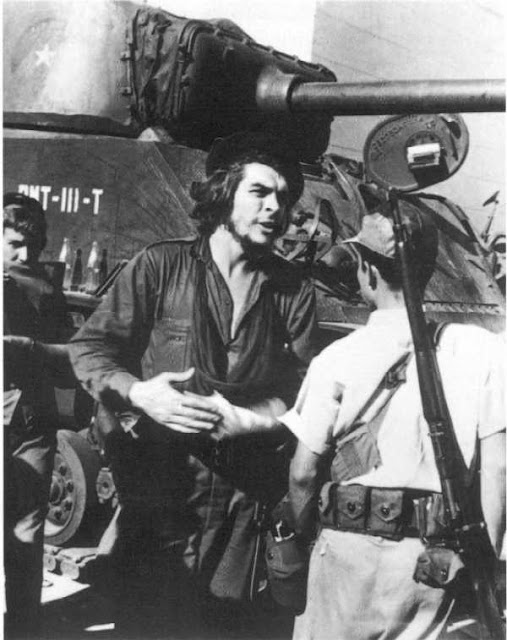Cultural Connections in Cuba
One of the many draws of Cuba is its vibrant mix of cultures and peoples. The history of this cultural collision on the island is a tangled web of subjugation, slavery, colonization, and revolt.
 |
| Cubans relaxing |
This blend of peoples and backgrounds lends a flamboyant flair to everyday life on the island. The foods, music, art, literature, and dress of Cubans are woven together to create a fantastic tapestry of culture unlike anywhere else in the world.
The Beginning: Guanahatabey and Taíno
 |
| Taíno woman dancing |
The indigenous inhabitants of Cuba were the Guanahatabey and Taíno peoples. The Taíno were neolithic Arawak immigrants from South America and brought with them the practices and traditions of the Amazon basin. These people utilized a matrilineal style of kinship, so that chiefs were decided based on the mother's family line. Women farmed while men hunted and fished. While the Taíno people certainly brought aspects of culture with them from South America, Taíno is unique among Amerindians and most likely developed on the Caribbean.
The Guanahatabey are somewhat of a mystery. Their language is lost to time, but Christopher Columbus' Taíno interpreter could not communicate with them. Their culture was distinct from the Taíno in several ways; chiefly because while the Taíno had developed sophisticated agriculture, the Guanahatabey only participated in small scale horticulture and relied primarily on gathering. They did not produce any ceramic pottery, but instead used bone tools. It is theorized that the Guanahatebey were an older culture already present in the Caribbean long before the Taíno arrived.
European Contact: Cross Cultural Exchange
Europeans were more than prepared to exchange culture with the Taíno. Upon Columbus' first visit to Cuba (which he dubbed San Salvador), he remarked that the Taíno people were "well-proportioned, with handsome bodies and good faces" and that they "had the sweetest talk, and were always laughing". By his second visit, the Taíno were commanded to pay tribute to Spain. In the 14th century, there were several Taíno uprisings, with some resulting in success and the acquisition of lands and royal charters. Most cultural exchange came from Spanish schools teaching Taíno children Spanish and spreading Catholicism. In exchange for these benefits, the Taíno were forced to work under the encomienda system.
Because of Spanish disease, warfare, and the brutal working conditions the Taíno were forced to live under, the entire island become depopulated of the indigenous people. Up to 90% of the Taíno population died. Today, there is a very small minority who claim Taíno descent in Cuba. These people, primarily from Yateras and Baracoa, preserve the culture of the Taíno.
Importation of West African Slaves
The West African slave trade saw the importation of thousands of Africans into Cuba from the 16th to the 19th century when it was finally abolished. The presence of African slaves in Cuba added to the growing mix of cultures at play, since African slaves were imported from a variety of countries. Genetic testing has determined that Afro-Cuban DNA is made up of a combination of Akon, Yoruba, Congo, Arará, Carabalí, Mandingo, Fula, and Mukua. All of these cultures varied slightly, and have meshed into a singular Afro-Cuban identity.
Much in the way that Spanish influence engendered the rise of machismo (the act of male domination in culture/home life), African influence helped the rise of afrocubanismo - the process of legitimizing black culture in Cuban art and music. This unique cultural identity is intrinsic to the Caribbean, but especially so with Cuba.
Unfortunately, Afro-Cubans are often excluded from tourism jobs, and systemic racism exists in almost every facet of the government. Black Cubans are routinely relegated to poor housing, and the issue of racism in Cuba is considered a "social bomb".
Even though both Batista and Castro made grand efforts to curb racism, Afro-Cuban underrepresentation remains a problem today, despite Castro's 1961 speech declaring that the Age of Racism was over.
Final Thoughts
So much more can be said about the melting pot of cultures that is Cuba. Everything from the cuisine to the music to the style of dress and religion have their origins in several different cultures – some thousands of miles away. The greatest catalyst for the cultures to come together in the ways that they have is deeply rooted in Spanish colonialism. While the history of Cuba is rife with aboriginal violence, slavery, and racism, the unique position of Cuba gives the local culture a very different feel from its other island neighbors.
Works Cited
Fuente, Alejandro de la. "Slave Law and Claims-Making in Cuba: The Tannenbaum Debate Revisited." American Society for Legal History (2004): 31.
Marcheco-Teruel, Beatriz, et al. "Cuba: Exploring the History of Admixture and the Genetic Basis of Pigmentation Using Autosomal and Uniparental Markers." US National Library of Medicine National Institutes of Health (2014).
Irving, Rouse. The Tainos : rise & decline of the people who greeted Columbus. New York: Yale University Pres, 1992.




Comments
Post a Comment